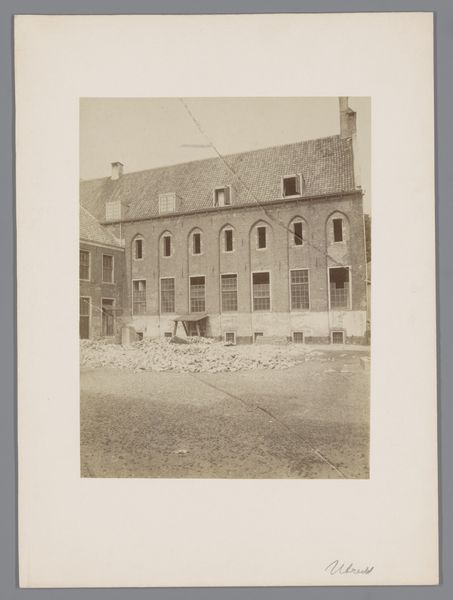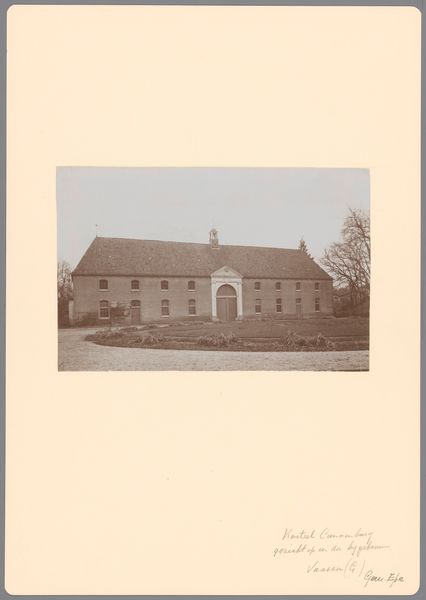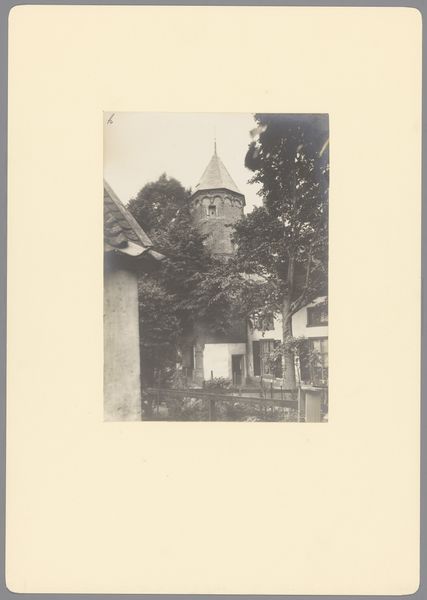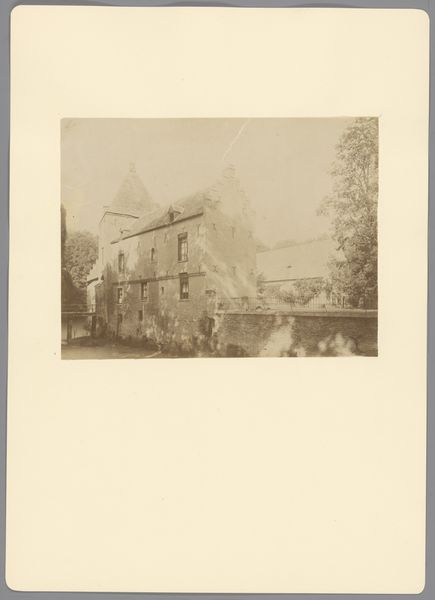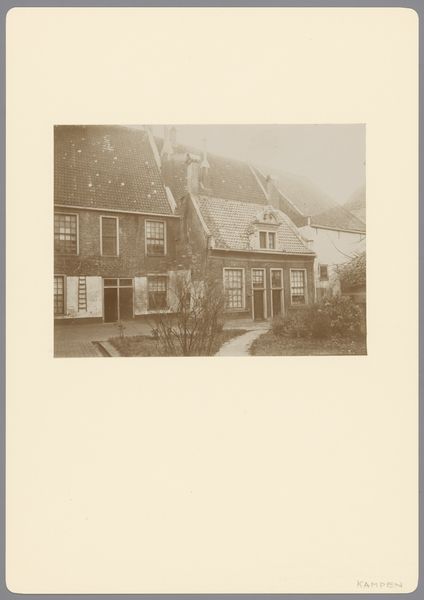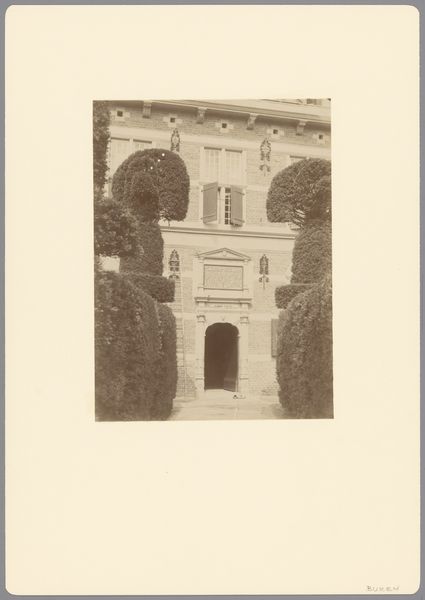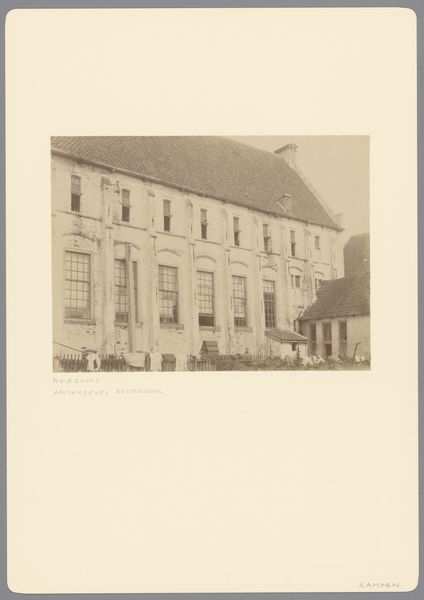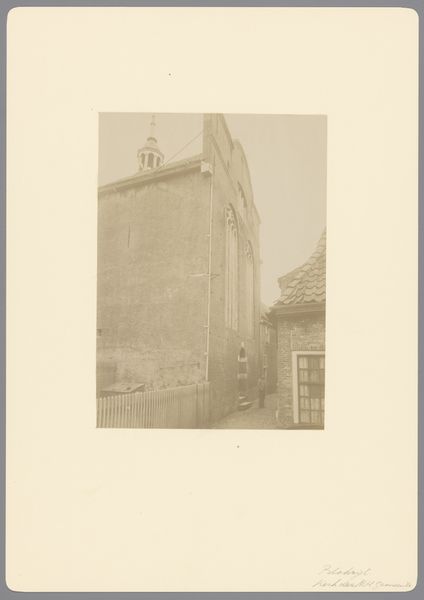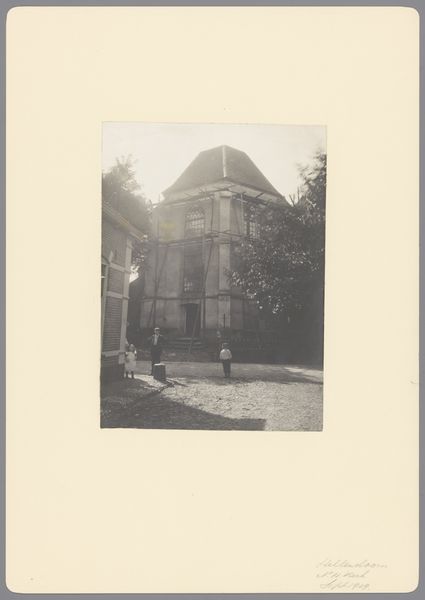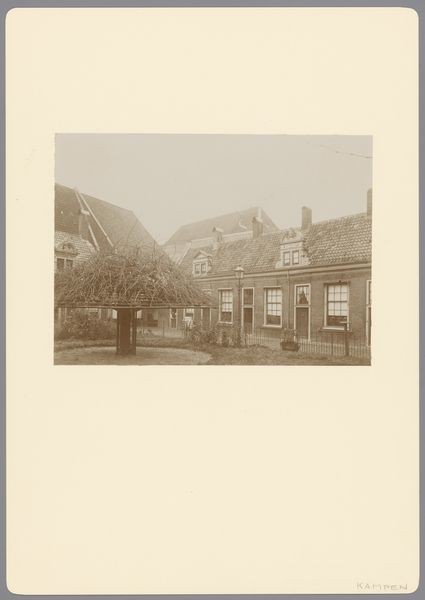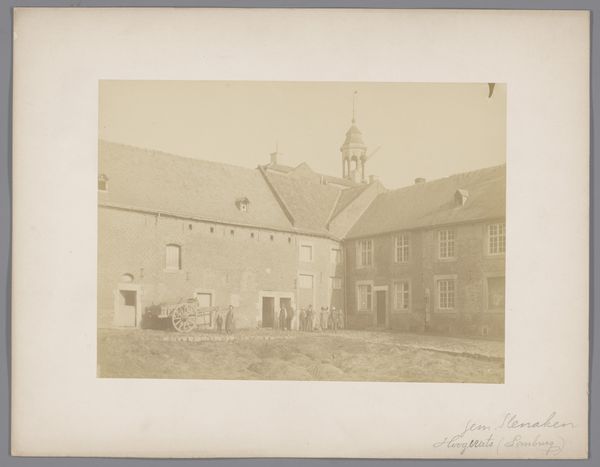
Dimensions: height 160 mm, width 233 mm
Copyright: Rijks Museum: Open Domain
Curator: Here we have a photographic print titled "Gedeelte van het Huis Bergh te 's Heerenberg," placing it somewhere in the 1890 to 1920 timeframe. The photographic technique is very interesting and it provides very balanced textures, in terms of composition, of the wall facade as well as the vegetation Editor: It looks like something out of a fairytale. It's simple, unassuming, yet…mysterious. I’m getting a very contemplative vibe, almost melancholic, from this scene. Curator: The framing definitely adds to that air of quiet contemplation. The gate in the foreground pulls your gaze, while that lone figure gives scale and purpose to the entry as an important archetypal passage to the house's world. What else stands out? Editor: Definitely the light, which is incredibly soft. The neutral tonality makes it very calming, a nice balance to the geometric architecture. It feels very self-contained and personal, maybe a metaphor for the individual soul. Curator: I think that the facade architecture becomes an emblematic icon, even in this section view. What are your views on its relation to other visual symbols in other epochs, for example. Egyptian walls, or pre-Colombian facades? Editor: Mmm, you got me thinking here. The repetitive fenestration is the equivalent to visual text and symbols repeating in diverse visual arts as a mantra, inviting to enter and at the same time respecting a given, closed code. As well the vegetation surrounding the facade contributes to softening the apparent austerity in the architecture, don’t you think so? Curator: Agreed! That dialogue between formal structure and nature's organic, flowing embrace is crucial. That interplay symbolizes an ideal relationship between rational order and the freedom of expression. Editor: Makes me feel hopeful and somewhat wistful about history…like I’m peering back at something simpler. Curator: Absolutely, in essence these structures represent more than just buildings; they hold layers of meaning—historical continuity and an invitation to understand our own journeys. Editor: I see it, I think! Thanks, that’s certainly deepened my appreciation for it!
Comments
No comments
Be the first to comment and join the conversation on the ultimate creative platform.

